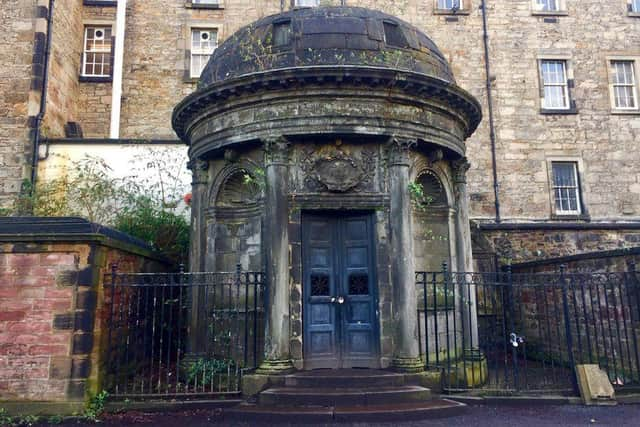Edinburgh Crime: Police probe claims famous 'poltergeist' mausoleum was violated by tomb raider
It has been claimed that the manager of a tourist firm used a key and gained access to the locked mausoleum of ‘Bloody’ George Mackenzie and removed the lid to one of the coffins.
Police have been told that he then photographed the corpse and he and an accomplice ‘examined it in order to determine its sex’.
Advertisement
Hide AdAdvertisement
Hide AdIt has also been claimed that a separate probe is underway to discover how the key to the mausoleum ended up in the alleged tomb raider’s hands


The key is reportedly kept securely at Mortonhall and it is understood to have been ‘accidentally’ handed over to the man at the centre of the allegations.
When the minister of Greyfriards, Richard Frazer, was made aware of the incident, he is understood have deemed it a criminal offence and a ‘"violation of a sepulchre".
A police source said: “We get asked to investigate all manner of things which the public never hear about and this must one of the most macabre and bizarre.
"It is however a serious offence and not the first time that Edinburgh’s historic kirkyards have attracted the wrong types. There may be an innocent explanation but I doubt it.”


George Mackenzie was Lord Advocate in Scotland in 1677, but is now most famous for his poltergeist haunting the kirkyard at Greyfriars, scratching thousands of visitors and filling them with a sense of dread and fear.
In 2000, a homeless man broke into Mackenzie’s tomb, crashed through the weak floor, grabbed the coffin and ends up dragging that with him.
The incident sparked a fresh round of poltergeist stories but there have been tales about Mackenzie since the days of Robert Louis Stevenson, who wrote about his restless soul, saying: “When a man’s soul is certainly in hell, his body will scarce lie quiet in a tomb…sometime or other the door must open.”
Advertisement
Hide AdAdvertisement
Hide AdIn 2004, Sonny Devlin avoided prison after being charged and tried with grave robbing and beheading a corpse, thought the first person to be charged with “violation of a sepulchre” in over a hundred years.
Mackenzie’s head was reunited with the rest of his remains and his tomb was welded shut to prevent it being targeted again, but the kirkyard is still a magnet for psychic investigators and ghost-hunters.
Robin Mitchell, a partner in The Cadies & Witchery Tours, who regularly takes visitors to seek Greyfriars, said: "I was stunned to hear the news of the breaking into the Mackenzie Mausoleum in Greyfriars Cemetery. This is quite unbelievable.
"Greyfriars Cemetery is a sacred burial ground which needs to be treated with the respect it deserves. It is the final resting place of many fascinating souls from Edinburgh's long and historical past.
"Locals and visitors will be horrified by this incident."
A city council spokesperson said: “We’re currently liaising with Police Scotland who are looking into the matter.”
A spokesperson for Police Scotland said: “On Wednesday, 8 December, officers received a report of unauthorised access to a mausoleum in the Greyfriars cemetery in Edinburgh. Enquiries are at an early stage to establish the full circumstances.”